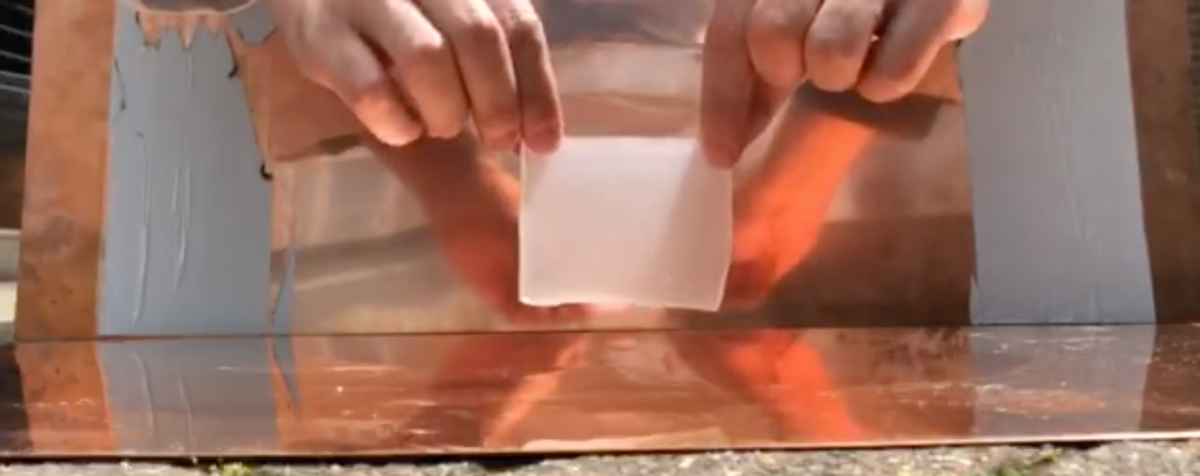With the ability to withstand the weight of an elephant, a new “super jelly' developed by researchers at the University of Cambridge may one day be used to advance the understanding of scientific principles from robotics to bioelectronics.
Though it is made of 80% water, a specially designed combination of molecules allows the gelatinous square to harden and act like shatterproof glass when compressed. To prove it, scientists ran over the material with a car.
How a material behaves is based on its molecular structure in a concept known as the properties of matter, which describe the four common states of matter in the universe: solid, liquid, gas, and plasma. Molecules in liquids, for example, are loosely held together and move loosely from place to place. In a solid, on the other hand, molecules are held tightly together and do not have space to move around.
Described in the peer-reviewed scientific journal Nature Materials, the jelly was created using what is known as a supramolecular polymer, which mimics natural proteins and links molecules together. Barrel-shaped molecules known as cucurbiturils serve as a “molecular handcuff” to hold other molecules within its cavity that, when strung together, create polymers that collectively make a hydrogel. The polymers have “on/off interactions” that control the materials' mechanical properties.
Together, these cucurbiturils create polymers that collectively make hydrogel that can withstand compression.
“In order to make materials with the mechanical properties we want, we use crosslinkers, where two molecules are joined through a chemical bond,” said study author Zehuan Huang in a news release.
“We use reversible crosslinkers to make soft and stretchy hydrogels, but making a hard and compressible hydrogel is difficult, and designing a material with these properties is completely counterintuitive.”
The “surprising” discovery has potential for use in soft robotics technology, cartilage replacement, and bioelectronics.
“At 80% water content, you’d think it would burst apart like a water balloon, but it doesn’t: it stays intact and withstands huge compressive forces,” said study author Oren Scherman, director of the university’s Melville Laboratory for Polymer Synthesis. “The properties of the hydrogel are seemingly at odds with each other.”
Collectively, it represents a new era of “high-performance soft materials.”
Sources
Huang, Zehuan. “Highly Compressible Glass-like Supramolecular Polymer Networks.” Nature Materials.
Melville Laboratory for Polymer Synthesis | Melville Laboratory for Polymer Synthesis. https://www.ch.cam.ac.uk/group/melville/melville-laboratory-polymer-synthesis. Accessed 24 Nov. 2021.
Movement of Particles. https://www.education.vic.gov.au:443/school/teachers/teachingresources/discipline/science/continuum/Pages/particles.aspx. Accessed 24 Nov. 2021.
“Scientists Describe ‘Dancing Molecules’ Capable of Repairing Spinal Cord Injuries.” Snopes.Com, https://www.snopes.com/news/2021/11/11/dancing-molecules-spinal-cord/. Accessed 24 Nov. 2021.
